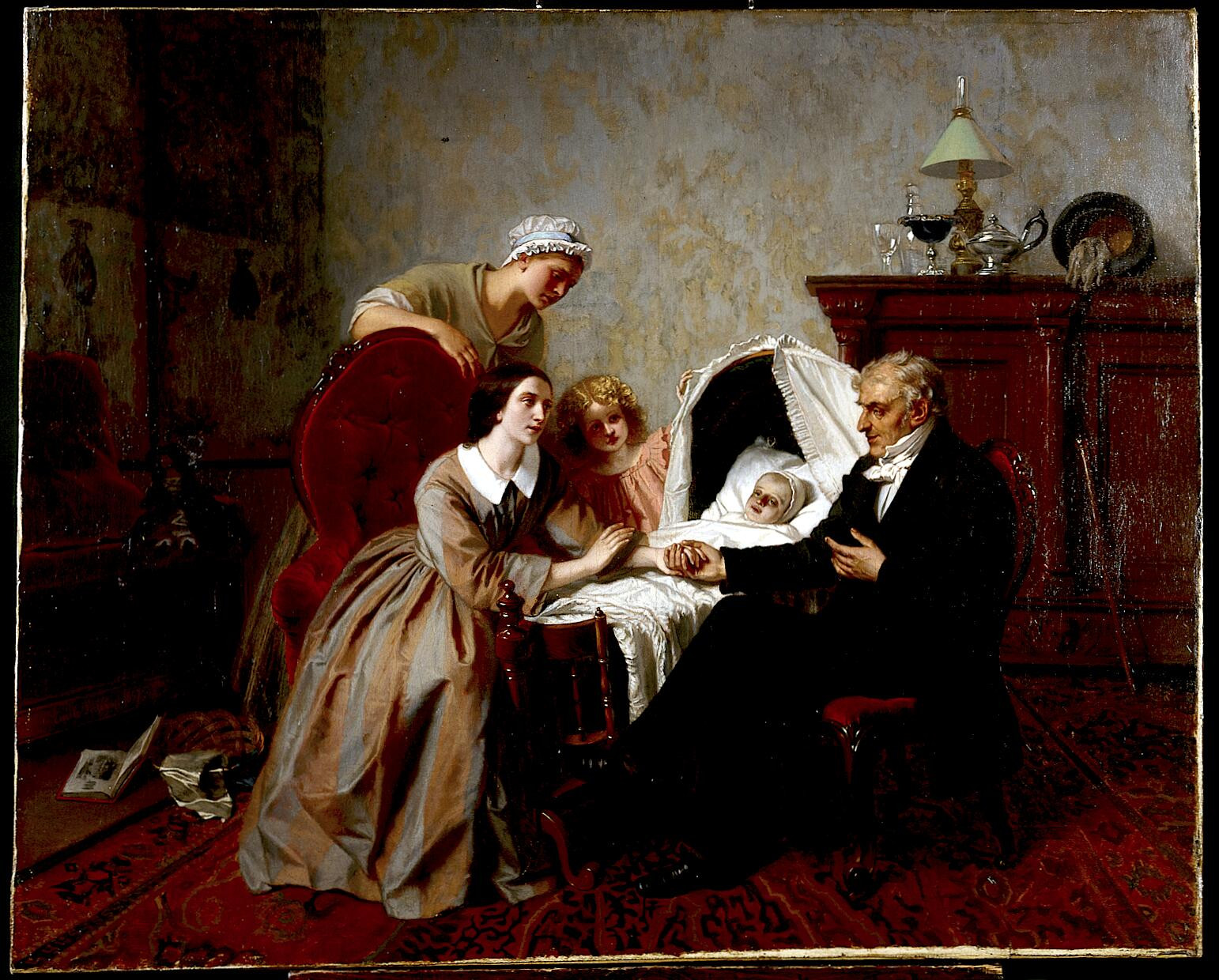It might raise an eyebrow for a modern American to hear a doctor referred to as “Mister” in Regency era books and films. Today, in the United States, the title “Doctor” is widely applied to anyone holding a doctorate, including medical professionals like surgeons. However, in Regency England, the title “Doctor” was specifically reserved for physicians. Other medical practitioners were addressed as “Mister” or “Mr.”. Adding to the complexity, many characters addressed as “Doctor” in Jane Austen’s novels were actually Doctors of Divinity, not medicine. Navigating this historical landscape of medical titles can be confusing. So, as they say in Britain, let’s clarify the distinctions of who was who in Regency medicine.
 Apothecary preparing medicine
Apothecary preparing medicine
Apothecaries: The Regency Era General Practitioners
At the base of the medical hierarchy were apothecaries. These professionals possessed extensive knowledge of herbs, potions, and medicines. Their primary role was to prepare and dispense prescriptions written by physicians. In more rural settings, apothecaries often broadened their skills to include basic surgical procedures, treating wounds and setting fractures. Apothecaries were more commonly found in the countryside than physicians or surgeons, often filling the void where those specialists were absent. In essence, they were the Regency equivalent of general practitioners. When someone in a rural area called for “the doctor,” they were typically summoning the apothecary, not a physician, as physicians and surgeons usually practiced in urban centers. Moreover, apothecaries were the go-to medical personnel for servants, even when a physician was accessible. This was primarily due to cost; apothecaries charged less, and the wealthy often deemed the health of their servants not worth the expense of a physician. Apothecaries were considered working-class men, and thus were not addressed as “doctor.” They were typically referred to by their surname, or “Mister” as a sign of respect.
 Surgeon with a saw
Surgeon with a saw
Surgeons: Skilled Practitioners, Not Gentlemen Doctors
The next tier was occupied by surgeons. Surgeons typically lacked formal university education or medical school training. Their expertise was gained through apprenticeships under experienced surgeons, often working alongside physicians. Despite their lack of social prestige, surgeons were crucial for the medical needs of the population. Their responsibilities extended beyond surgery to include wound care and fracture management. In fact, surgeons often possessed a more practical understanding of anatomy than physicians of the time. Like apothecaries, surgeons were not considered gentlemen due to the hands-on, often bloody nature of their work. A gentleman was not expected to engage in such “dirty work.” Consequently, surgeons were addressed as Lastname or Mr. Lastname, but never as “Doctor Lastname” or “Mister Doctor” in the formal sense.
 Physician diagnosing a patient
Physician diagnosing a patient
Physicians: The True “Doctor” of Regency Society
The title “Doctor” was reserved for physicians. These were men who had pursued formal medical education at a university or a reputable institution like Guy’s Hospital in Southwark. These institutions granted them a doctorate in medicine. Formal education was a privilege afforded to the upper classes, so physicians were generally gentlemen by birth. Reflecting their status as gentlemen, physicians rarely physically examined patients. Diagnosis was primarily based on questioning the patient. They would then write prescriptions, which were dispensed by apothecaries – a system akin to modern-day doctors and pharmacists. Socially, physicians were respected and integrated into the upper echelons of society, often dining with prominent families. They were the “mister doctor” of high society, though formally just “Doctor.”
 A doctor holding a baby
A doctor holding a baby
Accoucheurs: The Emergence of Male “Baby Doctors”
Accoucheurs: Male Midwives and the Shifting Sands of Titles
By the Regency period, the aristocracy, particularly in London, increasingly utilized accoucheurs. “Accoucheur,” French for “birth assistant,” denoted male doctors specializing in childbirth. Early accoucheurs were sometimes called “man-midwives,” suggesting an apprenticeship-based training, which would place them below gentleman status. However, many sought formal medical training in Edinburgh, which notably had a professorship in obstetrics from 1726. Here, historical accounts become somewhat contradictory. Some sources refer to “surgeon-accoucheurs,” implying they weren’t gentlemen. Others suggest accoucheurs were physicians, thus “doctors” and gentlemen, addressed as “Doctors.” Perhaps the title and social perception of an accoucheur varied depending on individual background and societal views. The term “mister doctor” could have been applied inconsistently in this evolving field.
Midwives: Traditional Caregivers
Traditional midwives were predominantly women who assisted in childbirth, although male midwives were also recorded. Some received formal training, but many were local women who gained expertise through experience. Midwives often served working-class women and typically handled fewer patients than doctors, potentially contributing to better mother and baby survival rates compared to deliveries by local doctors. However, midwives held no social standing among the gentry. They were certainly not referred to as “mister doctor” or any formal title by the upper classes.
So, the next time you encounter a character in Regency literature addressing a medical professional as “Mr.” instead of “Dr.”, or simply by surname, you’ll recognize this “doctor” as someone skilled in treating injuries, setting bones, and performing surgeries, but unlikely to be found at the Duchess’s ball. Understanding these nuances adds depth to our appreciation of Regency society and the world of Jane Austen.
Sources:
https://janeaustensworld.wordpress.com/2010/06/12/jane-bennets-apothecary-in-pride-and-prejudice/
https://thebeaumonde.com/doctors-in-the-regency-by-alicia-rasley/
